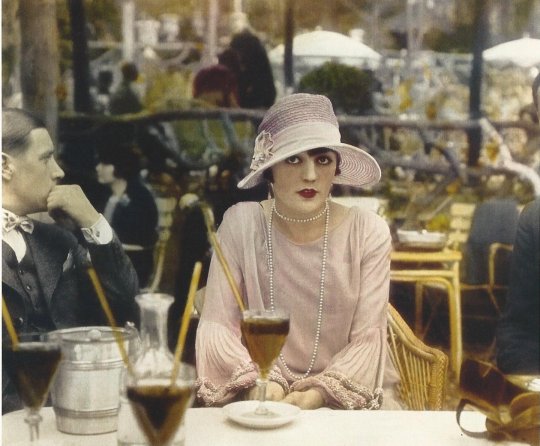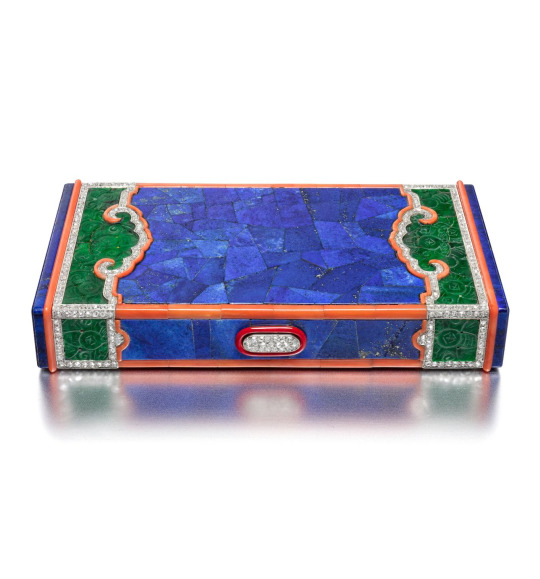#paris 1927
Explore tagged Tumblr posts
Text

André Kertész, Paris, 1927.
427 notes
·
View notes
Text


Pola Negri, The terrasse of the Café de la Paix in Paris, Hand-colored Photographs by Burton Holmes, 1927.
“I must urgently recommend that you spend your first leisure hour in Paris at the corner table of the terrasse of the Café de la Paix. It is a fact known and proved that … you have only to sit at this corner long enough, and a friend will appear in time.” - Burton Holmes, Travelogues.
Pola Negri born Barbara Apolonia Chałupiec[a] (Polish, 1897-1987) was a stage and film actress and singer. She achieved worldwide fame during the silent and golden eras of Hollywood and European film for her tragedienne and femme fatale roles. She was also acknowledged as a sex symbol.
#pola negri#1927#burton holmes#paris#cafe de la paix#illustration#vintage#1920s#art#fashion#20s#travelogues#travelogue#1920s paris#20s paris#Pola Negri#café de la paix#negri#jazz age#barbara apolonia chałupiec#twenties#apolonia chalupec#silent film actress#silent film stars#polish#polish actress#silent film actresses#femme fatale#femme fatale role#paris 1927
257 notes
·
View notes
Text

Le vieux Paris qui va disparaître
L'auberge du Compas d'or, 70 rue Montorgueil Agence Meurisse 1927
103 notes
·
View notes
Text

Cloister of the Alcobaça Monastery, Portugal
Portuguese vintage postcard, mailed in 1927 to Paris
#monastery#the alcobaça monastery#carte postale#postkarte#paris#historic#postcard#sepia#ansichtskarte#postkaart#tarjeta#alcobaa#briefkaart#portugal#ephemera#photography#mailed#portuguese#vintage#postal#cloister#photo#1927
10 notes
·
View notes
Text








LI MENG 李梦 for Red Runway 1927 Fashion Show | Paris Fashion Week
Li Meng: more photos here Paris Fashion Week: more photos here
2 notes
·
View notes
Text









September 2024 albums
#emily in paris#pushing daisies#the best little whorehouse in texas#dolly parton#adele#adele 30#radioland murders#joel mcneely#wings 1927#nelson riddle#the yakuza 1974#dave grusin#evil under the sun#cole porter
3 notes
·
View notes
Text
LEGENDS Z BABY KALOS FANS YOU SEE WHAT THEY"RE DOING FOR US WE DID IT IT'S HAPPENING AFTER 10,0000 YEARS
#and then literally the first thing I see about the pokemon presents on my dash is someone whining about how no one wants a kalos legends whi#ich first obectively untrue and second cmon don't be such a fking vibe killer#i'm excited if this is about the origins of lumiose city maybe it'll be a cool turn of the century vibe?#apparently there was a big overhaul of Paris in the late 19th century that was finally finished in 1927
3 notes
·
View notes
Text

Black Silk Dress with Sequins, 1927, French.
Designed by Madeleine Chéruit.
MFA Boston.
#paris#womenswear#extant garments#silk#sequins#dress#mfa boston#20th century#black#france#french#madeleine chéruit#house of chéruit#1927#1920s#1920s dress#1920s France#third republic
4 notes
·
View notes
Text

Remembering the time I actually stumped Akinator. I've been chasing that high ever since.
#akinator#stumped#I won#I tried every obscure chracter I could think of and he still got it every time#then I pulled from the oldest movie I own#the adventures of prince achmed#a 1927 german silent silhouette animatted film#pari banu#totally stumped him#i was so proud
0 notes
Text

André Kertész, Dans un bistrot, Paris, 1927.
87 notes
·
View notes
Text

Cartier Paris, Vanity Case, ca. 1927; Produced by Cartier (Paris, France); Manufactured by Henri Lavabre (French); Lapis lazuli, carved jade, carved ruyi, coral, diamonds, lacquer, mirrored plate glass, gold, platinum; 9.9 × 5.2 × 1.7 cm (3 7/8 × 2 1/16 × 11/16 in.);
Photo: Doug Rosa
Jeweled Splendors of the Art Deco Era: The Prince and Princess Sadruddin Aga Khan Collection features exquisite work from premier jewelry houses of Europe and America – among them Cartier, Van Cleef & Arpels, Lacloche Frères, Boucheron and Bulgari – dating from 1910 to 1938.
#cartier#cartier paris#1927#vanity case#Henri Lavabre#Lapis lazuli#carved jade#carved ruyi#coral#diamonds#lacquer#mirrored plate#glass gold#platinum#art deco#art deco design#art deco vanity case#beautiful#georgeous#beautiful object#art deco object#cigarette case#jass age#the roaring twenties
163 notes
·
View notes
Text




Mr. SAINT GRANIER, du Casino de Paris [p. G. Van PARYS]
"La longue Route / Charmaine"
(10" 78rpm. Columbia. 1927) [FR]
youtube
0 notes
Text

The Judgment Of Paris (1891)
Solomon Joseph Solomon (English, 1860 – 1927)
579 notes
·
View notes
Text

Fountain in Thoiry, Yveline region of France
French vintage postcard, mailed in 1927 to Paris
#vintage#1927#tarjeta#france#briefkaart#postcard#photography#thoiry#region#fountain#postal#carte postale#sepia#ephemera#historic#yveline#paris#french#ansichtskarte#postkarte#postkaart#mailed#photo
6 notes
·
View notes
Text









LI MENG 李梦 for Red Runway 1927 Fashion Show | Paris Fashion Week
Li Meng: more photos here Paris Fashion Week: more photos here
0 notes
